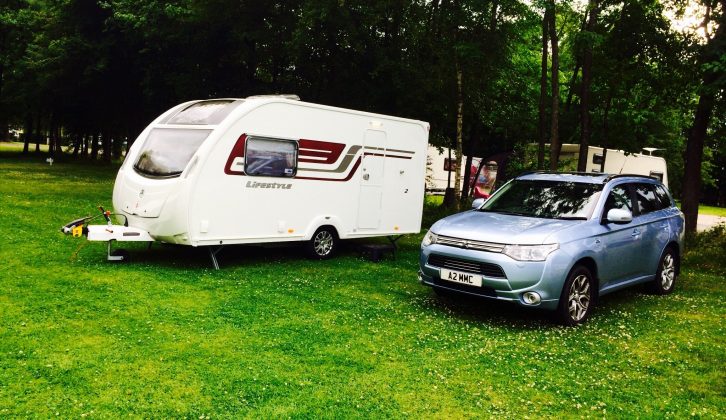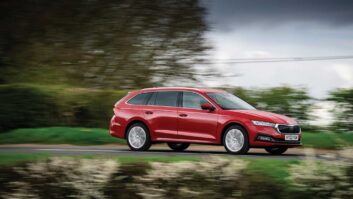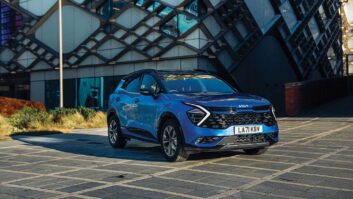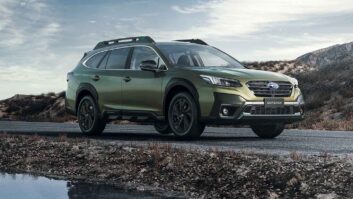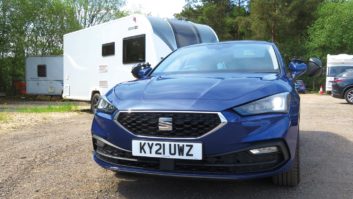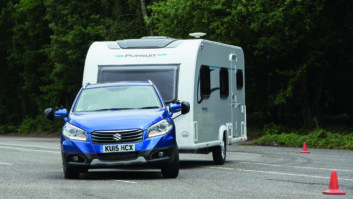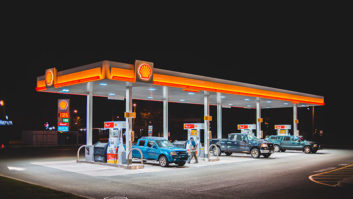For years, Mitsubishi SUVs like the Shogun were considered a byword for tough towing duties. But now caravanners, like everyone else, want a car that does loads to the gallon, is cheap to tax and painless to own. Perhaps the epitome of modern motoring is, therefore, the Mitsubishi Outlander PHEV.
Fuel efficiency, ease of ownership and a palatable tax rating are things promised by many modern SUVs, of which the Outlander PHEV is one of the most interesting. The PHEV combines electric motors and conventional petrol power to provide a four-wheel-drive car which is heavy enough to tow something useful. For company car buyers, it is cracking value but even for private buyers, the small penalty over the cost of the diesel and the claimed triple-digit MPG figures mean it is definitely worth a look.
I hooked the 2014 Swift Lifestyle 2 to the PHEV for a local weekend away. The 1200kg Swift is comfortably within the PHEV’s 1500kg towing limit, and keeping inside the 75kg noseweight limit was very easy too. As a tow car, it is fair to say that the Outlander is talented in some areas.
In terms of practicality, the Mitsubishi Outlander PHEV has a huge boot making it great for caravan holidays, plus there is loads of space inside for passengers and, in GX4 trim, there are plenty of toys too. On the road, stability isn’t an issue, at least while towing something as modest as the Swift, and it steers and stops neatly too.
The big fly in the caravanning ointment is that it is well short of the requisite puff to really impress as a tow car. As the PHEV has a range of just 30-odd miles in pure electric mode, I was relying heavily on the 119bhp petrol engine and by modern standards, that just isn’t very much. During the journey, the car will recharge a little as it runs, but you’re unlikely to regenerate more than a mile or two of electric range. The equivalent Outlander diesel would drag the Swift without even noticing. In terms of what it gets to the gallon when towing, we saw around 28mpg. Good, but not outstanding.
Progress on the southern stretches of the M25 was perfectly fine, but I did feel like the petrol engine was worked very hard when pulling up motorway inclines. Navigating steep A- and B-roads when approaching the campsite was a bit sluggish too, particularly where I had no momentum to push me along. This tallies with the Tow Car Awards 2014, where the PHEV’s hill starts where singled out as a problem.
Once you get to the campsite, the electric operation of the PHEV comes into its own. Manoeuvring the van on site in silence is slightly eerie, but for late night site arrivals, neighbours have no reason for complaint. As for charging the car on site, you’d need a special cable to connect to a caravan mains hook-up and I can’t see many site owners being delighted at you charging your car from their supply.
For general touristing duties around town while you stay on site during your caravan holidays, the PHEV works well of course, as it is back in its element, of being a large SUV with eye-catching running costs. Trips to the beach, to town, the supermarket or the golf course are all well within reach.
The Outlander PHEV is as modern as the hour, but it is plain to see it is compromised as a tow car. It lacks the flexibility of a diesel Outlander, for example. Rivals such as the Volvo V60 Plug-In Hybrid have a beefy diesel engine to call upon which is better at towing when the batteries run flat, but the tiny boot and massive price do it no favours when it comes to finding favour with tow car buyers.
All told then, it is great to see that there is now a choice for caravanners who want to tow on hybrid power, but unless you tow infrequently, for this generation of car at least, I think that diesel should be the preferred option for the majority of owners considering what tow car to buy next.
Manoeuvring on site in silence is slightly eerie, but great for late night arrivals
